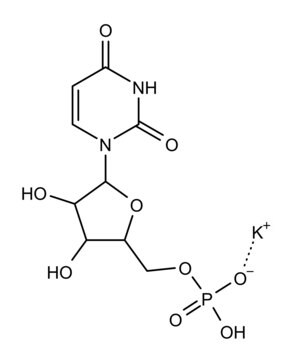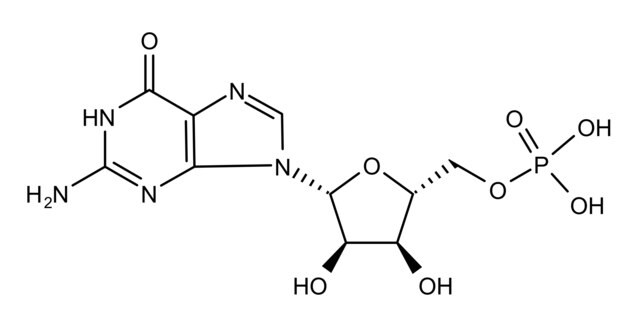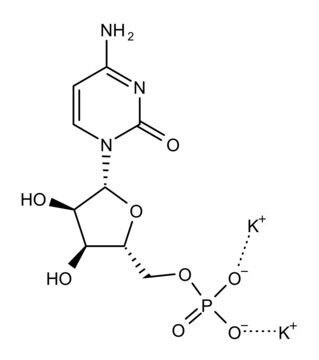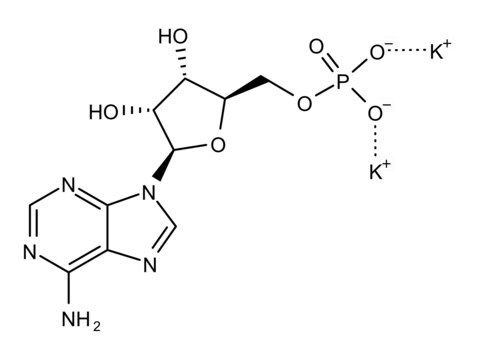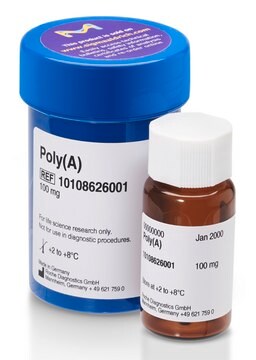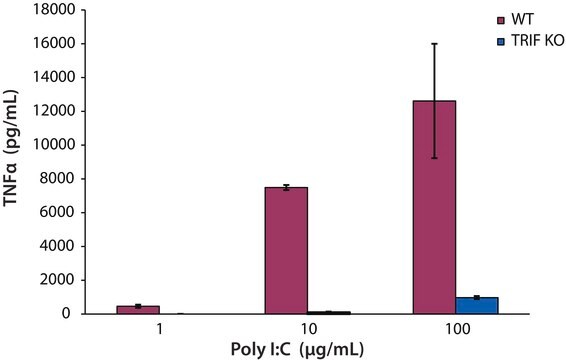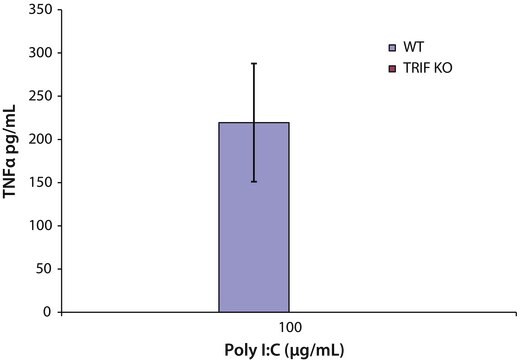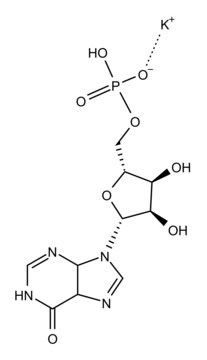P1537
Polyadenylic acid-Polyuridylic acid sodium salt
double-stranded homopolymer
Synonym(s):
Poly[A]•Poly[U]
Sign Into View Organizational & Contract Pricing
All Photos(2)
About This Item
Recommended Products
Quality Level
form
powder
storage temp.
−20°C
InChI
1S/C10H14N5O7P.C9H13N2O9P/c11-8-5-9(13-2-12-8)15(3-14-5)10-7(17)6(16)4(22-10)1-21-23(18,19)20;12-5-1-2-11(9(15)10-5)8-7(14)6(13)4(20-8)3-19-21(16,17)18/h2-4,6-7,10,16-17H,1H2,(H2,11,12,13)(H2,18,19,20);1-2,4,6-8,13-14H,3H2,(H,10,12,15)(H2,16,17,18)/t4-,6-,7-,10-;4-,6-,7-,8-/m11/s1
InChI key
VGQHQOKIMNKUEF-ZLOOHWKQSA-N
Application
Polyadenylic acid-Polyuridylic acid (polyAU) is a double stranded homodimer studied for potential therapeutic activity, especially when coupled with radiotherapy. PolyA/U is used in comparative physiochemical studies with other duplex and single-stranded polymers such as poly-A and poly-U.
Other Notes
Double stranded homopolymer
Storage Class Code
11 - Combustible Solids
WGK
WGK 3
Flash Point(F)
Not applicable
Flash Point(C)
Not applicable
Personal Protective Equipment
dust mask type N95 (US), Eyeshields, Gloves
Choose from one of the most recent versions:
Already Own This Product?
Find documentation for the products that you have recently purchased in the Document Library.
Customers Also Viewed
Polyadenylic acid-polyuridylic acid (poly A : U) and experimental murine brucellosis. II. Macrophages as target cells of poly A : U in experimental brucellosis.
E D Madraso et al.
Immunology, 35(1), 77-84 (1978-07-01)
Nino Lomadze et al.
Organic & biomolecular chemistry, 4(9), 1755-1759 (2006-04-25)
The affinities of polyamines consisting of ethylenediamine units equipped with either one or two terminal naphthyl-, anthryl-, or acridyl units towards PolyA.PolyU as an RNA model, and Poly(dA).Poly(dT) as a DNA model are screened by measuring the melting point changes
Tarita Biver et al.
Nucleic acids research, 38(5), 1697-1710 (2009-12-17)
The interaction of coralyne with poly(A)*poly(U), poly(A)*2poly(U), poly(A) and poly(A)*poly(A) is analysed using spectrophotometric, spectrofluorometric, circular dichroism (CD), viscometric, stopped-flow and temperature-jump techniques. It is shown for the first time that coralyne induces disproportionation of poly(A)*poly(U) to triplex poly(A)*2poly(U) and
H-C Jeung et al.
Annals of oncology : official journal of the European Society for Medical Oncology, 19(3), 520-526 (2007-11-22)
This phase III trial was to compare 5-fluorouracil (5-FU), adriamycin, and polyadenylic-polyuridylic acid (poly A:U) against 5-fluorouracil plus adriamycin (FA) for operable gastric cancer. From 1984 to 1989, patients who had D(2-3) curative resection were randomly assigned to receive chemotherapy
W Pohle et al.
Biopolymers, 67(6), 499-503 (2002-09-05)
We used FTIR spectroscopy to comparatively study the hydration of films prepared from nucleic acids (DNA and double-stranded RNA) and lipids (phosphatidylcholines and phosphatidylethanolamines chosen as the most abundant ones) at room temperature by varying the ambient relative humidity in
Our team of scientists has experience in all areas of research including Life Science, Material Science, Chemical Synthesis, Chromatography, Analytical and many others.
Contact Technical Service